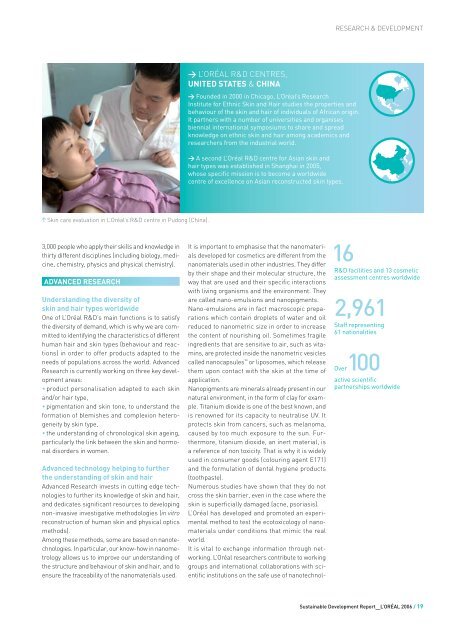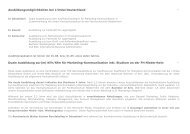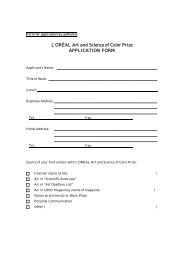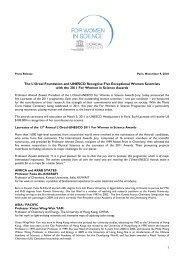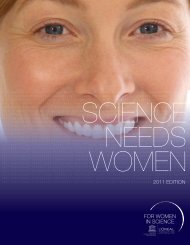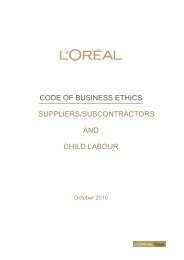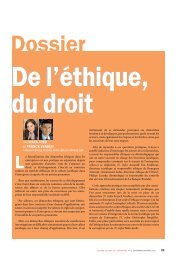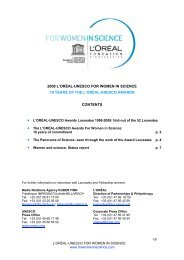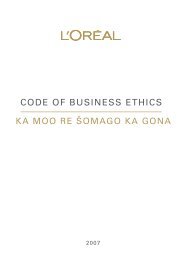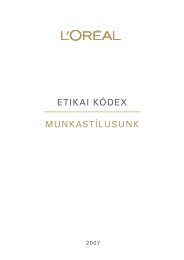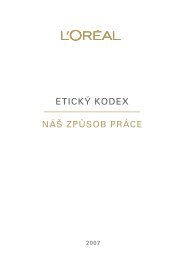2006 SUSTAINABLE DEVELOPMENT REPORT
2006 SUSTAINABLE DEVELOPMENT REPORT
2006 SUSTAINABLE DEVELOPMENT REPORT
Create successful ePaper yourself
Turn your PDF publications into a flip-book with our unique Google optimized e-Paper software.
Skin care evaluation in L’Oréal’s R&D centre in Pudong (China).<br />
3,000 people who apply their skills and knowledge in<br />
thirty different disciplines (including biology, medicine,<br />
chemistry, physics and physical chemistry).<br />
ADVANCED RESEARCH<br />
Understanding the diversity of<br />
skin and hair types worldwide<br />
One of L’Oréal R&D’s main functions is to satisfy<br />
the diversity of demand, which is why we are committed<br />
to identifying the characteristics of different<br />
human hair and skin types (behaviour and reactions)<br />
in order to offer products adapted to the<br />
needs of populations across the world. Advanced<br />
Research is currently working on three key development<br />
areas:<br />
• product personalisation adapted to each skin<br />
and/or hair type,<br />
• pigmentation and skin tone, to understand the<br />
formation of blemishes and complexion heterogeneity<br />
by skin type,<br />
• the understanding of chronological skin ageing,<br />
particularly the link between the skin and hormonal<br />
disorders in women.<br />
Advanced technology helping to further<br />
the understanding of skin and hair<br />
Advanced Research invests in cutting edge technologies<br />
to further its knowledge of skin and hair,<br />
and dedicates significant resources to developing<br />
non-invasive investigative methodologies (in vitro<br />
reconstruction of human skin and physical optics<br />
methods).<br />
Among these methods, some are based on nanotechnologies.<br />
In particular, our know-how in nanometrology<br />
allows us to improve our understanding of<br />
the structure and behaviour of skin and hair, and to<br />
ensure the traceability of the nanomaterials used.<br />
> L’ORÉAL R&D CENTRES,<br />
UNITED STATES & CHINA<br />
> Founded in 2000 in Chicago, L’Oréal’s Research<br />
Institute for Ethnic Skin and Hair studies the properties and<br />
behaviour of the skin and hair of individuals of African origin.<br />
It partners with a number of universities and organises<br />
biennial international symposiums to share and spread<br />
knowledge on ethnic skin and hair among academics and<br />
researchers from the industrial world.<br />
> A second L’Oréal R&D centre for Asian skin and<br />
hair types was established in Shanghai in 2005,<br />
whose specific mission is to become a worldwide<br />
centre of excellence on Asian reconstructed skin types.<br />
It is important to emphasise that the nanomaterials<br />
developed for cosmetics are different from the<br />
nanomaterials used in other industries. They differ<br />
by their shape and their molecular structure, the<br />
way that are used and their specific interactions<br />
with living organisms and the environment. They<br />
are called nano-emulsions and nanopigments.<br />
Nano-emulsions are in fact macroscopic preparations<br />
which contain droplets of water and oil<br />
reduced to nanometric size in order to increase<br />
the content of nourishing oil. Sometimes fragile<br />
ingredients that are sensitive to air, such as vitamins,<br />
are protected inside the nanometric vesicles<br />
called nanocapsules or liposomes, which release<br />
them upon contact with the skin at the time of<br />
application.<br />
Nanopigments are minerals already present in our<br />
natural environment, in the form of clay for example.<br />
Titanium dioxide is one of the best known, and<br />
is renowned for its capacity to neutralise UV. It<br />
protects skin from cancers, such as melanoma,<br />
caused by too much exposure to the sun. Furthermore,<br />
titanium dioxide, an inert material, is<br />
a reference of non toxicity. That is why it is widely<br />
used in consumer goods (colouring agent E171)<br />
and the formulation of dental hygiene products<br />
(toothpaste).<br />
Numerous studies have shown that they do not<br />
cross the skin barrier, even in the case where the<br />
skin is superficially damaged (acne, psoriasis).<br />
L’Oréal has developed and promoted an experimental<br />
method to test the ecotoxicology of nanomaterials<br />
under conditions that mimic the real<br />
world.<br />
It is vital to exchange information through networking.<br />
L’Oréal researchers contribute to working<br />
groups and international collaborations with scientific<br />
institutions on the safe use of nanotechnol-<br />
RESEARCH & <strong>DEVELOPMENT</strong><br />
16<br />
R&D facilities and 13 cosmetic<br />
assessment centres worldwide<br />
2,961<br />
Staff representing<br />
61 nationalities<br />
Over100<br />
active scientific<br />
partnerships worldwide<br />
Sustainable Development Report_L’ORÉAL <strong>2006</strong> / 19


